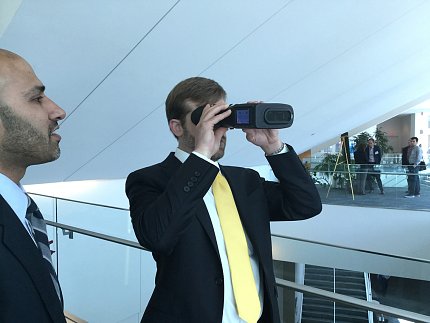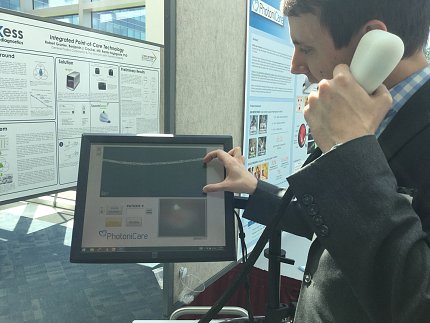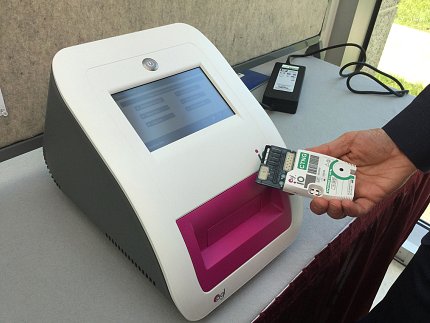Symposium on Point-of-Care Devices Shows How Far We’ve Come

Point-of-care devices have helped doctors diagnose and manage diseases for years, giving them the ability to quickly and inexpensively manage diabetes, find out if their patients have a bacterial infection and need antibiotics or are pregnant. Now, NIBIB-funded researchers are taking the latest technological developments and adapting them to smaller, simpler, faster, more affordable and more portable devices that can fit in a physician’s office or in low-resource settings and return results in minutes.
These researchers, from three different centers supported by the National Institute of Biomedical Imaging and Bioengineering, gathered at NIH this summer at the Point-of-Care Technology Research Network (POCTRN) Symposium. They shared data and ideas focusing on “Co-Inventing the Future Through Collaboration.”
Speakers discussed the newest technologies that have been developed, produced and commercialized through this collaborative network, emphasizing the importance of bringing together clinicians, researchers and those with industry experience. Posters and demonstrations of technologies funded by this network gave attendees the chance to see how effective and far-reaching the POCTRN coalition has been.
One of the newest companies to develop from POCTRN funding is PhotoniCare. Ear infections are misdiagnosed up to 50 percent of the time, which means that some people—mainly children—are taking unnecessary antibiotics, while others are not receiving the treatment they need, thus increasing their chances of needing surgery in the future.

Current technology only helps doctors see the surface of the eardrum, but not the underlying middle ear where the disease resides. PhotoniCare has developed a new device that uses an advanced light technology called optical coherence tomography to see through the eardrum into the middle ear. The device has a clear black and white display that more objectively shows whether or not there is an infection by providing quantitative metrics about the infection and could greatly increase physicians’ diagnostic accuracy.
Other developments include a handheld device that uses the same technology utilized in Lasik eye surgery to determine an individual’s eyeglass prescription and a small toaster-sized device that can more quickly and accurately diagnose sexually transmitted infections and health care-associated infections such as chlamydia and MRSA, respectively.
In addition to providing funding for new technology, a center within POCTRN—the Center for Integration of Medicine and Innovative Technology—also provides essential training in accelerating the emergence of health care innovations from academic labs into commercialization and clinical practice. Commercialization Readiness Assessment and Accelerator for Solutions in Health Care is a 10-week course that helps researchers learn about the necessary steps to move their product from the lab into the market and matches the teams with experienced business mentors.

“Having an experienced personal mentor providing guidance through the customer discovery and commercialization process was extremely valuable to us,” said Ryan Nolan of PhotoniCare. “This unique relationship provided us a level of exceptional support unlike the other accelerator programs we’ve benefitted from.”
“This symposium shows just how much can be accomplished in a short time when experts from various areas work together to focus on creating and improving technology,” said Dr. Tiffani Lash, director of the NIBIB programs in sensors and telehealth. “Point-of-care devices are already in high demand around the world and will continue to be needed in low-resource settings. Networks like POCTRN can help stimulate research and provide resources for new businesses to succeed.”
